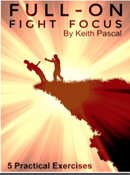Power Punching Warning
Do you practice martial arts regularly, or do you sometimes slack off?
Are you diligent in your punching? Power punching? Speed punching? Kicks? Combinations?
After years and years of power-punch practice, I have found that I have a gauge that lets me know when I need to increase my power punching practice. Whenever I see or experience a certain punch-ending motion, I know that I have lost my edge. Since my martial arts is a lifelong pursuit, I know there will be times where I let my training go. (Call it an unplanned hiatus.)
But I have a limit to my lack of practice, and it involves that clue at the end of the punch, that I just mentioned. It’s a great warning.
Here’s exactly what I’m talking about:
.
Power Punching in Steps:
.
1. Warm up. Start with some loose punches; sloppy is fine. You want the muscles loose as you warm them up. (I warm up for about 3-4 minutes.)
2. Practice your “punch of the day.” Maybe you choose forward, vertical punches, starting with the fist at the elbow of the other arm — wing chun style. Or maybe you elect to practice back-fists.
.
.
.
Punch 300 – 500 times, not making contact with anything. Just stand there, hitting air.
3. Now, I find a heavy bag, or have someone hold a focus mitt. Now, is the time to add in the pure power. Punch fast and hard. Really hard.
Note: If you need a wonderful exercise, with variations, for developing knockdown punches, click here.
In step #3, I can’t advise you exactly how many or even the range of punches against a heavy object. Why?
Because I “DON’T” want you to hit to the point of fatigue. In other words, don’t tire out your arms. The reason is that in step #4, you are going to check your end-of-motion gauge.
So, power punch … for a while.
4. Now, go back to your air-punching exercise. This time, I want you to look at the very end of the motion. Decide before you start punching exactly where your punch will end. For example, with vertical punches, I want each punch to end exactly at full extension. No wavering after the punch “pops” the end point. Precision is the key.
On the other hand, I want my back fist to retract about 3-4 inches. If there is no snap back, then I know that my muscles were too tense during the back-fist hit. And if my hand snaps back 12 inches, then I know that I am sloppy.
Expert Punching
Even though I learned to punch within a year, I am still improving my punches. Now, it has been over 30 years. For me, it really is a process that will take a lifetime … I hope. (You get the point.)
Anyway, it took me about ten years to figure out this exact spot for determining whether or not my power punching had become sloppy. If after warm-ups, and some contact punching, I could stop my air hits anywhere I chose, with extreme precision, then I knew that I was in form.
For me, losing my martial-arts edge means not being able to place my punch wherever I want … and I mean exactly where it needs to go, with no wobbling or missing the mark.
Do you feel the same?
How do you know when you’ve lost your martial advantage? And what do you do to get it back?
Leave your comment below …
Tags: lose edge, losing martial edge, power punching, punch improvement



Distance is misjudged espically in boxing